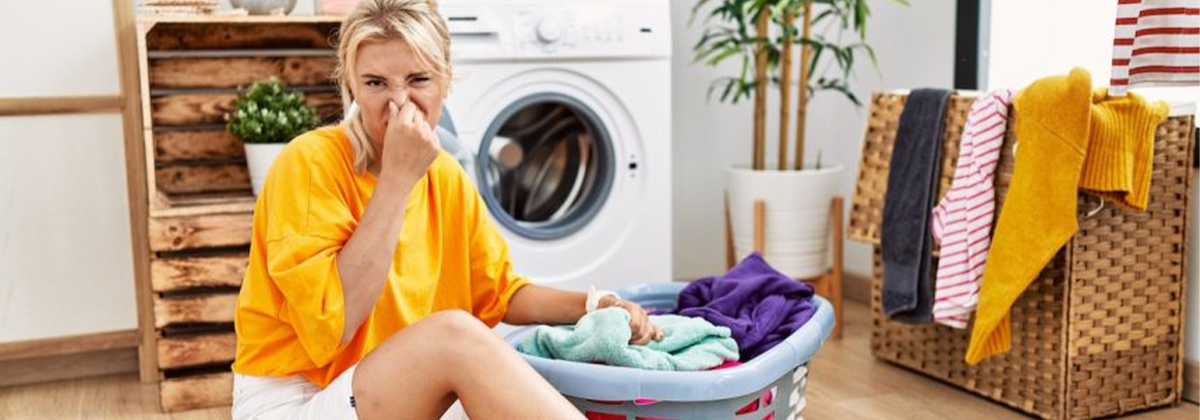17 Apr Removing Mould From Clothes (Part 2)
Ugly mould is found due to the growth of fungi in moist environments such as clothing covers, drawers, or any place with high humidity, especially the laundry room or bathroom. But the worst place where mould can appear is on clothes. If by chance your dirty clothes are left in the washing machine for a few days, these creatures will be found there. If you try to ignore it, it may endanger your health. We talked about this problem in the last part. This article will discuss the rest of the methods for removing mould.
rest of methods for removing mould
Drying clothes in the sun
This method is a natural and convenient way to remove mould from clothes. If you have much access to sunlight in your residence, you can quickly spread it under the sun to kill mould. But for colored fabrics, sunlight may cause their color to become dull. After washing the clothes, you have to dry them in the sun.
Soap and water
Soap and water are suitable home methods for removing mould from clothes. In this way, dissolve some soap in lukewarm water. Then apply it to the mould. Wait a few minutes for the clothes to absorb this solution. Be careful not to rub the soap or cloth soaked in soapy water too hard on the mouldy area of the clothes because it penetrates deep into the fabric. Finally, remove excess moisture from the clothes and dry them with a hair dryer.
Tea tree oil
Tea tree oil is one of the most effective substances for removing mould and fungi. Although this oil may initially seem more expensive than other cleaning materials, a thick and small bottle of tea tree oil is enough to clean the clothes mould often. You must ensure that the tea tree oil you have purchased is pure and free of artificial and chemical substances. Otherwise, there may be other oily stains on your clothes.
Mixing
Mix one teaspoon of tea tree oil with one cup of hot water. Pour this mixture into a spray bottle.
Spraying
spray the solution on all mouldy parts of the clothes (back and front).
Soaking
Let the clothes soak for at least 10 minutes before washing.
Washing
You can wash the clothes manually or with a washing machine; In addition, it’s better to add the rest of the bottle’s contents to your washing solution. If you don’t like the smell of tea trees, use clove oil instead of tea tree oil, which is just as effective.
Warning
Although the smell of tea tree oil may be powerful initially, it disappears a few hours after washing the clothes. At the same time, you should keep the bottle out of the reach of children and pets.
Hydrogen Peroxide
It has been proven that the use of hydrogen peroxide significantly kills fungi and moulds. A diluted solution of 3% hydrogen peroxide should be used to remove mould from clothes. The method of working with oxygenated water is the same as that of working with oil essences that we explained earlier.
Commercial washing materials and accessories
If you don’t have access to any of the above materials at home, try the following methods because they are as efficient and effective as they are.
Brush and detergent
First of all, arrange your table in a well-ventilated room or outdoors. Don’t forget that spores are quickly transferred to other surfaces or even to the lungs.
Brush
Try to remove the mould as much as you can with the help of a toothbrush. Choose a soft brush so as not to damage the fabric. If your brush is too small, you can use a toothbrush instead.
Spray
Spray a commercial detergent or stain remover liberally on the garment.
Soaking
Wait 30 minutes for this liquid to penetrate the fabric thoroughly.
Washing
Wash the clothes by hand or using a washing machine with hot water.
Bleach
Bleach is not only an effective solution to eliminating moulds, but it can also eliminate its allergens. But since bleaches are usually only able to remove mildew from non-porous surfaces, they should be mixed with borax to increase efficiency.
Washing with a washing machine
Add a cup of bleach to the detergent compartment of the washing machine; You can also use bleach detergents.
Hand wash
Mix half a cup of bleach with warm water in a large pan. Then let the clothes soak for a few hours before washing.
Warning
This method is only suitable for washing white clothes. Coloured clothing may be discoloured or faded. So first read the clothing care label; If it says “don’t use bleach”, never use this method.
How to prevent mould on clothes
The easiest way to remove mould from clothes is to prevent decay from growing on them. For this purpose, you should pay attention to the following points:
Fast drying
Please don’t leave your clothes alone after washing them. Take them out of the washing machine immediately and dry them in the air or with the help of a dryer. Remember that mould thrives in damp places; wet places don’t necessarily mean a washing machine. The longer they stay moist or wet, mildew and fungi will likely grow on them. They can also be seen on sweaty clothes, wet shoes, or wet swimwear stored inside a sealed bag. So take your wet clothes out of the plastic bag as soon as you get home, and if you can’t wash them immediately, Hang them up to dry.
Inhibitor spray
Prepare a spray of tea tree oil and water according to the above description and spray it on your clothes daily. In this case, in addition to your clothes smelling fresh, spores are also killed before they can spread inside your wardrobe.
Keeping the humidity level low
If you regularly encounter mouldy clothes in your home, you should look for the cause. When the humidity level of an environment exceeds 60%, moulds start to grow. Therefore, in this case, reducing the humidity of the domain is considered a preventive measure.
Proper ventilation
The ventilation conditions of the house and the wardrobe should be suitable. Open the windows and turn on the ceiling fans so the air flows freely in the living environment. At the same time, for the air to flow easily in the living area, furniture should be placed a few inches away from the walls. Don’t forget that spores don’t stay in one place; Therefore, your carpets must be dry so they don’t become a place for mould to grow and spread. In addition, you should close all the windows on rainy days so that the house’s humidity doesn’t increase.
Using a dehumidifier
A dehumidifier is a simple and efficient way to control the house’s humidity level. Putting the dehumidifier near the clothes’ storage (either under the floor or in the wardrobe) is better. If you dry your clothes indoors, place the dehumidifier near the hanger.
Checking filters
Finally, you should check the filters of the air conditioning systems. Usually, all cooling or heating ventilation systems have nets and filters. Therefore, you should replace these filters every three months so that they don’t become a place to accumulate and grow moulds and allergens.
Removing fungus and mould on towels and clothes
Removing mould from towels isn’t as easy as removing mildew from clothes because the towel’s fabric is so that moulds are placed in the material of the towel and are difficult to remove. Place the area of the towel infected with fungus and full of black spots in a mixture of vinegar, water, and bleach. Wait 15 minutes. You will see that all the black spots on the towel have disappeared. The point of this solution is that the amount of vinegar, water and bleach must be equal for it to work. If you pour too much water, it won’t work, Especially if there are a lot of black spots. Finally, rinse the towel, wash it once in the washing machine at high temperature, and spread it in the open air to dry completely.
Note
- To use bleach, be sure to use gloves and a mask and use it in a place with air conditioning. And be sure to leave the doors and windows open in a closed environment.
- If you have a coloured towel and can’t use bleach, put the towel in a mixture of vinegar and boiling water.
How should we prevent fungus and black spots from forming on the towel?
Leave the towel or clothes in the bathroom.
- If the towel or clothing is damp, spread it out in a ventilated area to dry completely.
- At least once a month, wash the towel in the washing machine with vinegar and powder.
- Sometimes spread towels or clothes in the sun. The sun destroys the fungi and prevents their growth.
To wrap up
Moulds are always found indoors and outdoors. Therefore, it’s almost impossible to have a mould-free home. But it’s possible to control the growth of bacteria. In this article, we mentioned various effective methods to eliminate them. If you don’t have the opportunity or patience to wash your clothes, you can count on the specialized NeatEx team. NeatEx washes your clothes best and ensures you have clean and tidy clothes. Don’t damage your valuable clothes with improper washing. With the most advanced tools and the latest knowledge, we will deliver your clothes of the best quality as soon as possible.




Sorry, the comment form is closed at this time.